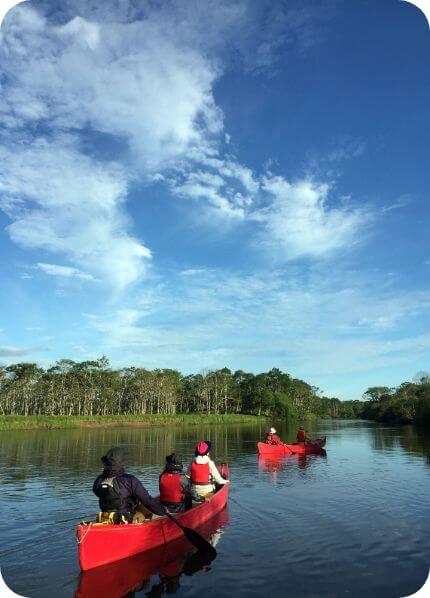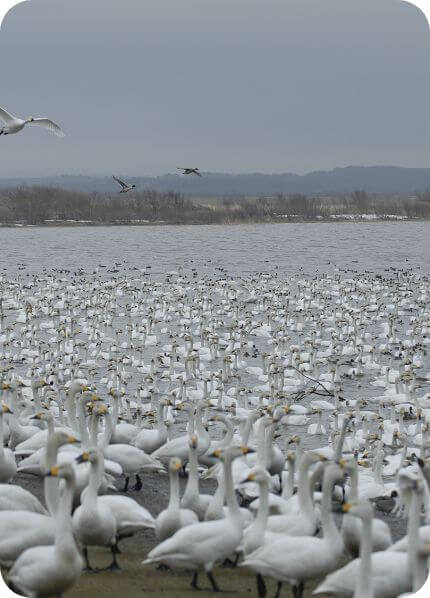AINU CULTURE
place: Shiraoi
The Ainu are the indigenous people of Hokkaido. They have their own language, as well as a richly unique culture as showcased in oral traditions such as yukara (“epic poem”), the Iomante bear ceremony, and patterned artwork. Although no one follows the traditional way of life today, the core of Ainu culture has continued to be passed down. Present-day Ainu are nurturing new forms of folk culture inspired by the traditions they inherited.
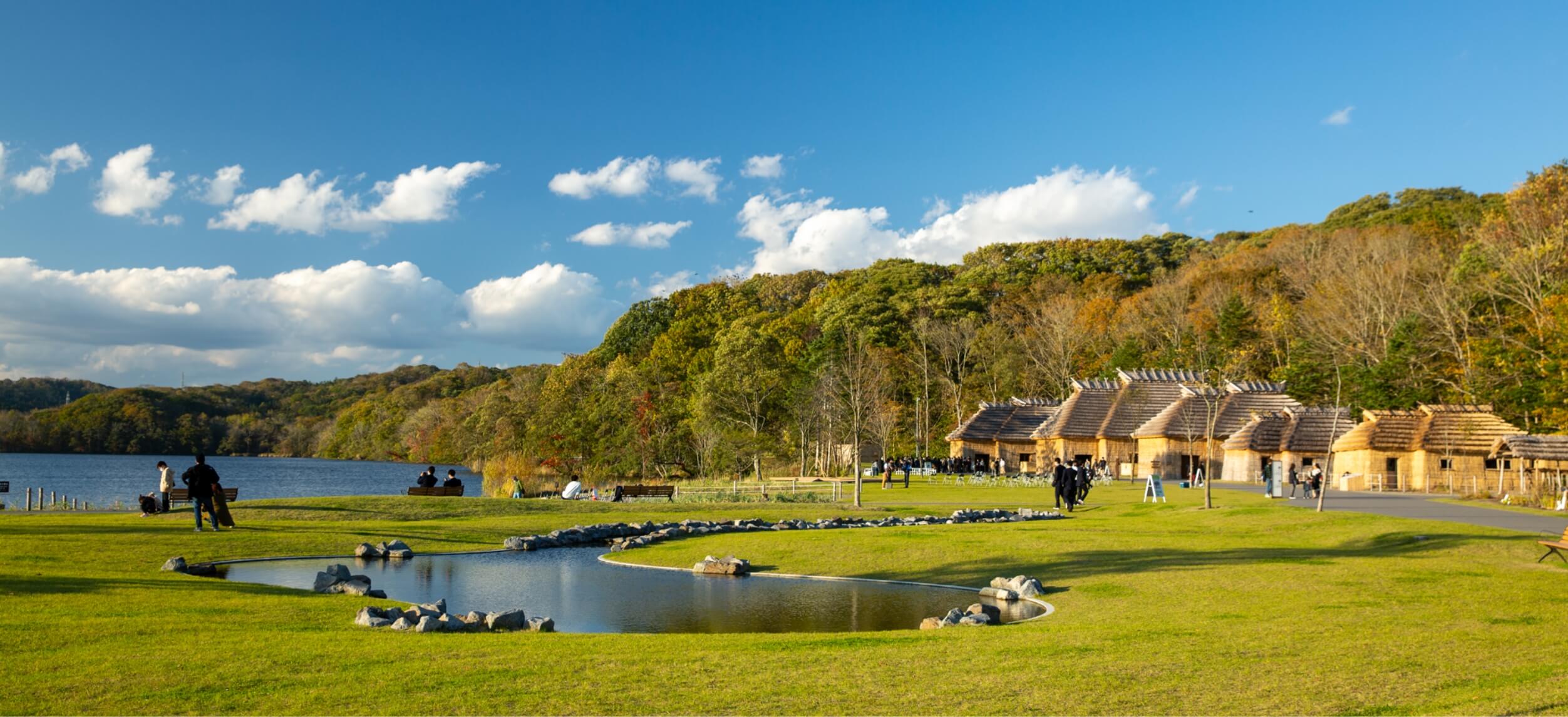
One with Kamuy : The Ainu Worldview
None of the daily necessities humanity needs, clothing, food and shelter, can be gained without the blessings of nature. However, just as nature gives, it can also take away. The Ainu people believe that there is a soul in everything, from animals to natural phenomena, and even man-made tools. These plants and animals that give us their blessings, the fire, water and tools we could not live without, and even the weather; all are Kamuy to which the Ainu people give reverence.
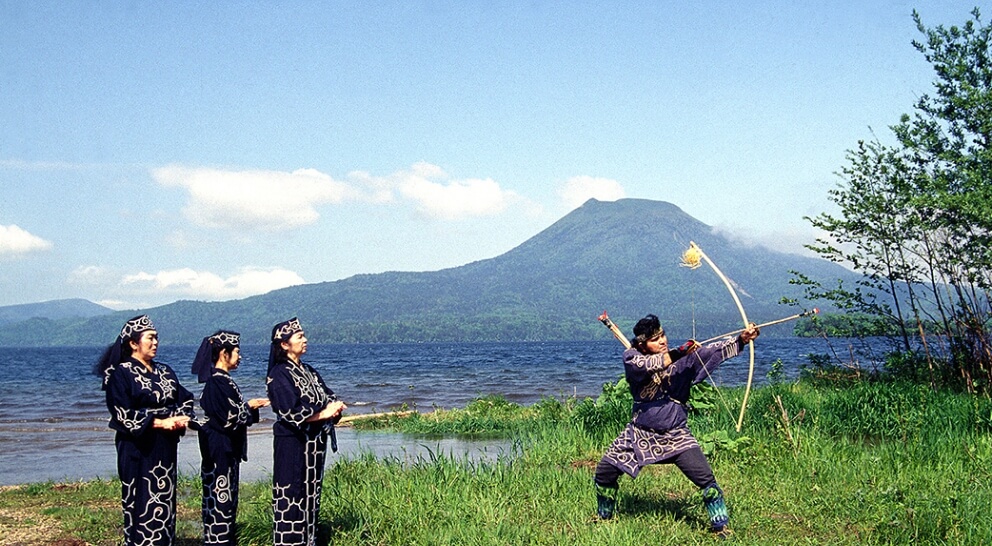
What are thought of as Kamuy varies from region to region, but it is said that the fire Kamuy is close to people’s hearts and considered particularly important because it gives us both warmth and light, and also conveys our appeals and wishes to other Kamuy. Brown bears and owls (Blakiston’s fish owls) are also considered to be among the most exalted Kamuy.
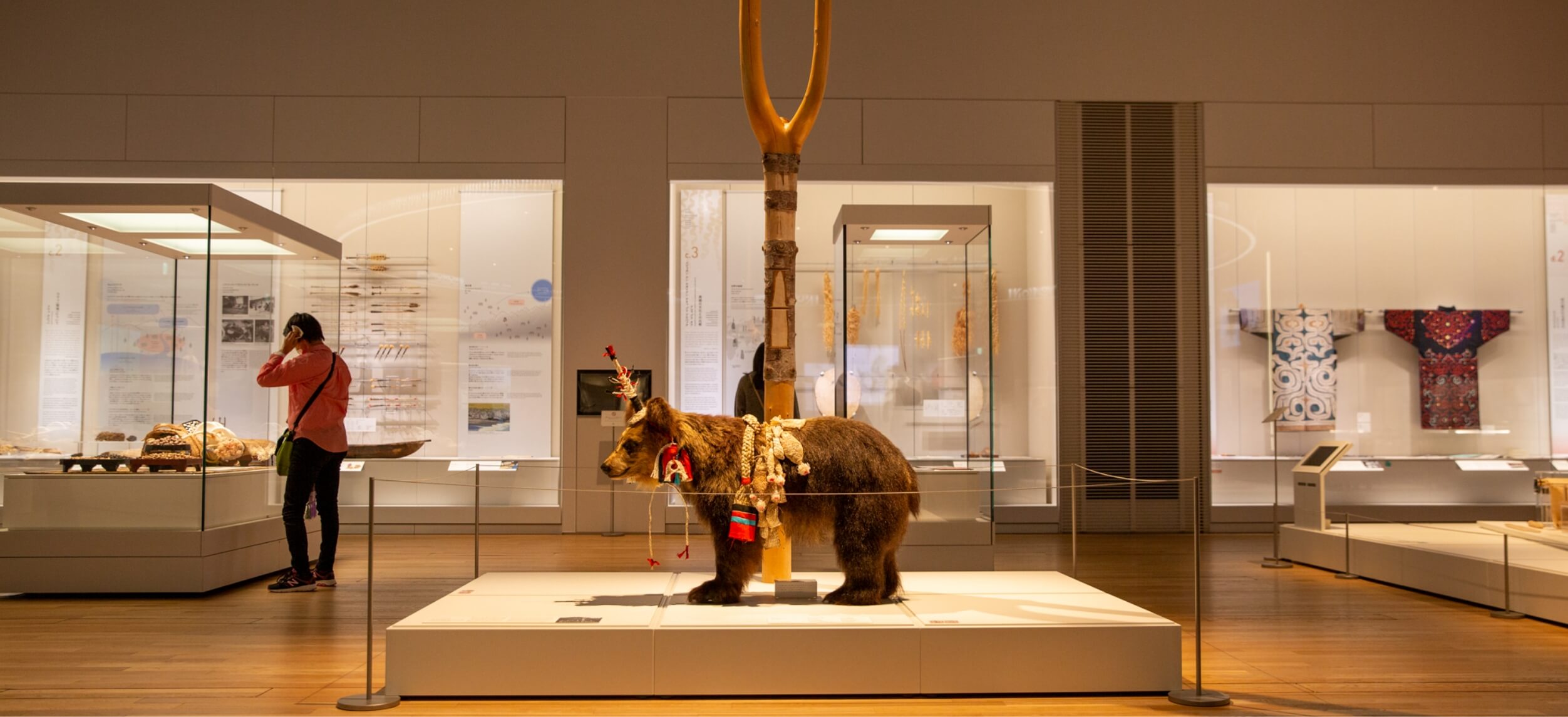
Praying to Kamuy The Connection Between Kamuy and Humans
Ainu means “human” in the Ainu language. This term is used in contrast to Kamuy. In the faith of the Ainu people, the world is influenced and formed by interactions between human and Kamuy. Kamuy usually reside in their own world, only entering the human world if they have a role to fulfill or seek enjoyment.
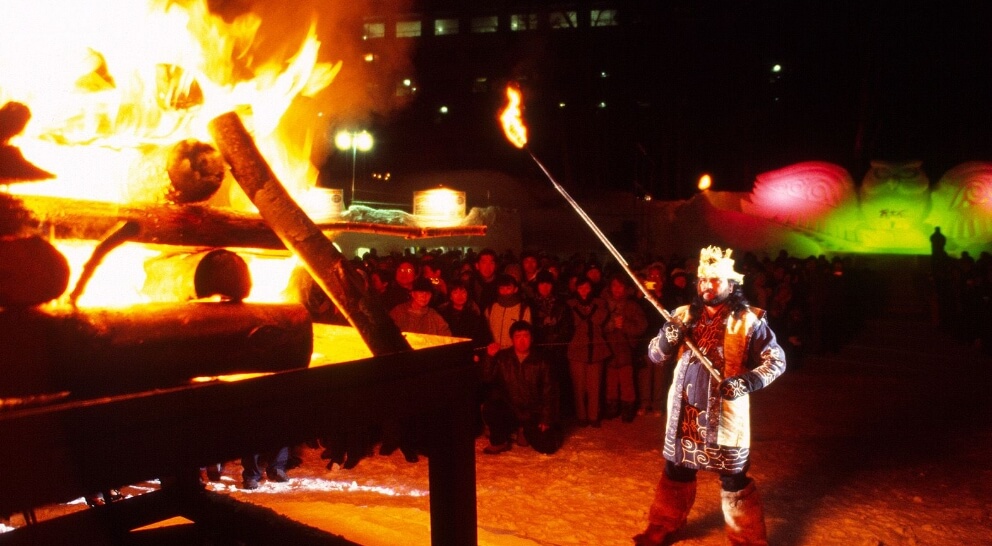
For instance, a Kamuy which has taken the earthly form of an animal gives to humans that which they need to survive, such as meat or fur. In this way, Kamuy give that which we need or find useful, thus preserving humanity’s way of life. Humans give thanks for the blessings of the Kamuy, and pray to the Kamuy (Kamuynomi) when in need using a variety of ceremonial tools.
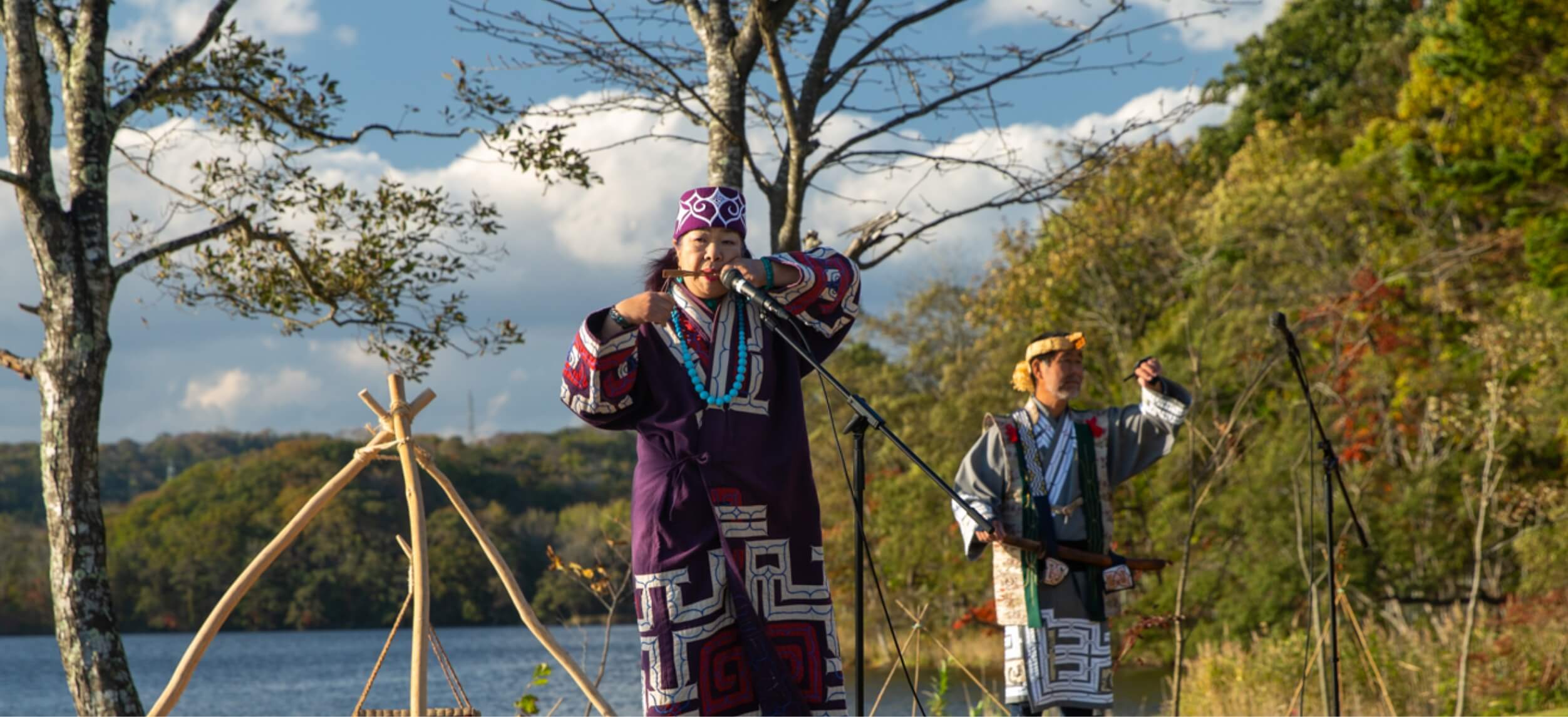
Songs, Dances and Instruments
Just like cultures from around the world, the Ainu people’s culture was created through their own traditional songs and dances. There are many kinds of dances, some performed in a circle, the movements of birds and animals woven into the movement of the dances. There are also solemn, stately dances where men stomp on the floor as they raise and lower their arms as well as dances where a bow and arrow or sword is wielded.
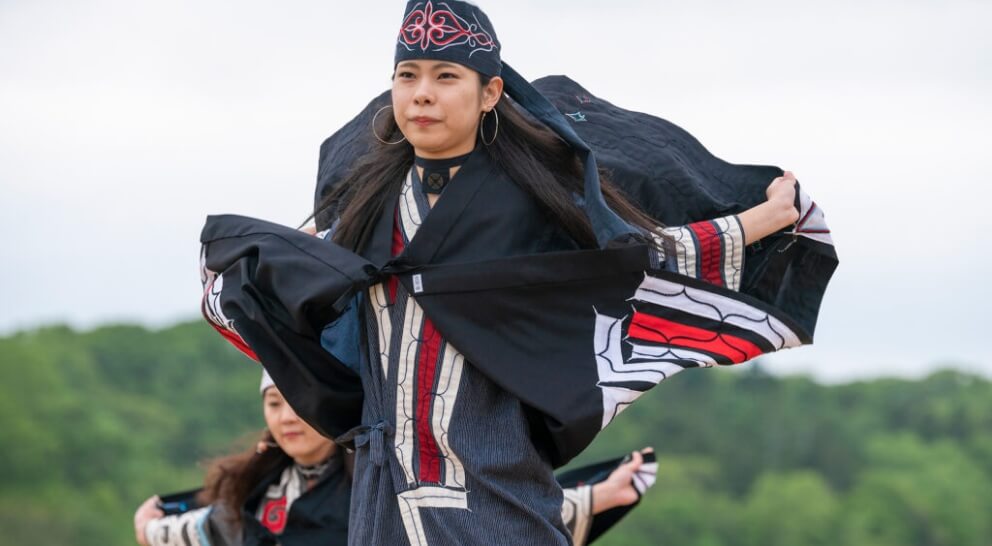
In some songs, several women sit around a lid or some other lacquerware object, striking it together in rhythm as they sing. There are also songs for work, such as using mallets to pound grain, lullabies, and improvised melodies created to evoke the memory of a certain occasion.
Traditional instruments include the mukkuri, where a plate-shaped bamboo valve vibrates in the mouth and this resonance produces sound, and the tonkori, a string instrument mainly passed down from the Sakhalin Ainu.
The traditional songs and dances of the Ainu are registered as UNESCO Intangible Cultural Heritage, and also have the backing of preservation societies in a variety of locations to ensure that they are handed down. Today, Ainu culture has been adopted by a new generation of artists, who proudly incorporate elements of their cultural heritage into their own original works.
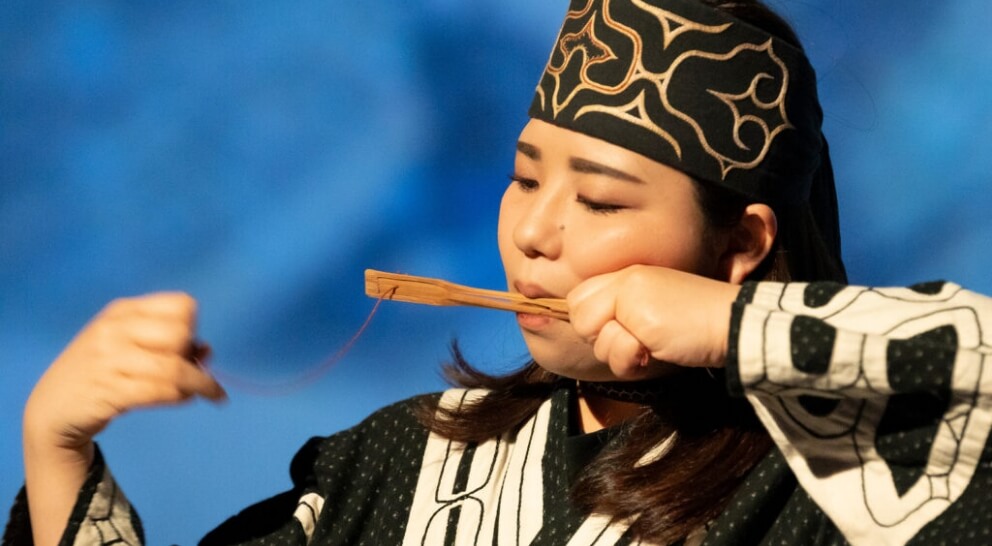
- HOME
- Adventure Travel in HOKKAIDO
- Snow Season



